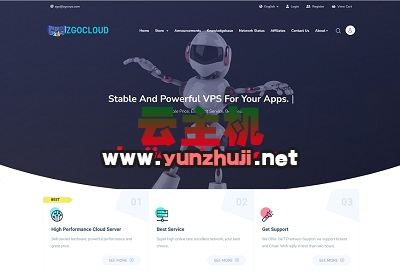ClientServer Architecture: Understanding the Basics
In the realm of computer networking and distributed computing, the clientserver architecture stands as a fundamental model that delineates the roles of computers within a network. This architecture is instrumental in understanding how data is shared and managed across different systems. Let’s delve deeper into what clientserver architecture means and its implications.
What is ClientServer Architecture?
The clientserver architecture is a distributed application structure that partitions tasks between two types of entities: clients and servers. In this setup, the server acts as a repository of services and resources, while the client requests these services or resources from the server.
Key Elements of ClientServer Architecture
1、Client: The client is a computer program that requests a service or resource from another program, known as the server. Clients can take many forms, such as web browsers, mobile apps, or desktop applications.
2、Server: The server is a powerful computer or system that provides services or resources to clients upon request. Servers are typically more robust than clients in terms of processing power, storage capacity, and reliability.
3、Network: The network is the medium through which clients and servers communicate. It can range from local area networks (LANs) to wide area networks (WANs), including the internet.
4、Protocol: Protocols are sets of rules and conventions that govern the communication between clients and servers. Common protocols include HTTP/HTTPS for web traffic, FTP for file transfers, and SMTP for email transmission.
How Does It Work?
The interaction between clients and servers follows a specific sequence:
1、Request: The client initiates a request for a specific service or resource. This request includes details about the type of service needed and any necessary parameters.
2、Processing: Upon receiving the request, the server processes it based on predefined logic or algorithms. This may involve querying a database, performing calculations, or accessing files.
3、Response: Once the server has processed the request, it generates a response containing the requested information or acknowledgment of the action taken.
4、Delivery: The server sends the response back to the client over the network using the same or a different protocol.
5、Rendering: The client receives the response and renders it in a way that is meaningful to the user, whether through displaying web pages, opening files, or presenting data in an app interface.
Advantages of ClientServer Architecture
1、Scalability: By distributing tasks between clients and servers, the system can handle a large number of users efficiently. Adding more servers can improve performance and capacity without significant changes to the client side.
2、Centralized Management: Servers can be centrally managed, making it easier to update, maintain, and secure the system. Changes made at the server level propagate to all clients automatically.
3、Resource Optimization: Clients do not need powerful hardware since most processing occurs on the server side. This allows for thin clients or lightweight devices to access complex services.
4、Flexibility: Clients can access services from any location with network connectivity, enabling remote work and mobility.
Disadvantages of ClientServer Architecture
1、Dependency on Network: Both clients and servers must be connected to the network for communication to occur, making the system vulnerable to network failures or latency issues.
2、Single Point of Failure: If the server goes down, all clients lose access to the services, highlighting the risk associated with relying on a single server.
3、Complexity: Managing a large number of servers and clients can become complex, requiring sophisticated tools and skilled personnel.
4、Security Concerns: As data travels across networks, there is an increased risk of interception or unauthorized access, necessitating strong security measures.
Conclusion
Clientserver architecture is a cornerstone of modern computing, enabling efficient distribution of tasks and resources across networks. Its advantages make it suitable for a wide range of applications, from simple file sharing to complex cloud computing environments. However, it also presents challenges that must be addressed through careful planning and robust infrastructure management. Understanding this architecture is essential for anyone involved in designing, implementing, or managing networked systems.
【ClientServer Model in English】
The term "clientserver" refers to a distributed application architecture where tasks or processes are divided between the client, which requests the service, and the server, which provides the service. This model is fundamental in computer networks and is widely used in various applications, including web services, file sharing, and email systems.
Here is a detailed and wellstructured explanation:
ClientServer Model Definition:
The clientserver model is a networking and software architecture where a client is a piece of software that requests a service from a server. The server is a piece of software that provides the requested service.
Key Components:
1、Client: The client is typically a user interface or application that initiates requests to the server. It can be a web browser, a desktop application, or a mobile app.
2、Server: The server is responsible for processing client requests and providing the requested services. It can be a web server, a database server, or a file server.
How It Works:
Client Requests: The client sends a request to the server for a specific service or resource.
Server Response: The server receives the request, processes it, and sends back the response to the client.
Data Transfer: The communication between the client and the server usually involves data transfer, which can be in various forms such as text, images, or multimedia files.
Advantages:
Scalability: The model allows for easy scaling of services by adding more servers.
Flexibility: Different clients can interact with the same server, providing a flexible architecture.
Centralization: Centralized data storage and processing can enhance security and maintenance.
Disadvantages:
Single Point of Failure: If the server fails, all clients relying on it may be affected.
Network Dependency: The performance of the clientserver model is highly dependent on the network’s reliability and speed.
Applications:
Web Services: The most common example is the World Wide Web, where web browsers (clients) request web pages from web servers.
Email: Email clients (such as Outlook) request email services from email servers.
File Sharing: Filesharing applications use clientserver architecture to transfer files between users.
In summary, the clientserver model is a fundamental concept in networking and software design, enabling efficient and scalable services through the interaction between clients and servers.

 云主机测评网
云主机测评网


















最新评论
本站CDN与莫名CDN同款、亚太CDN、速度还不错,值得推荐。
感谢推荐我们公司产品、有什么活动会第一时间公布!
我在用这类站群服务器、还可以. 用很多年了。